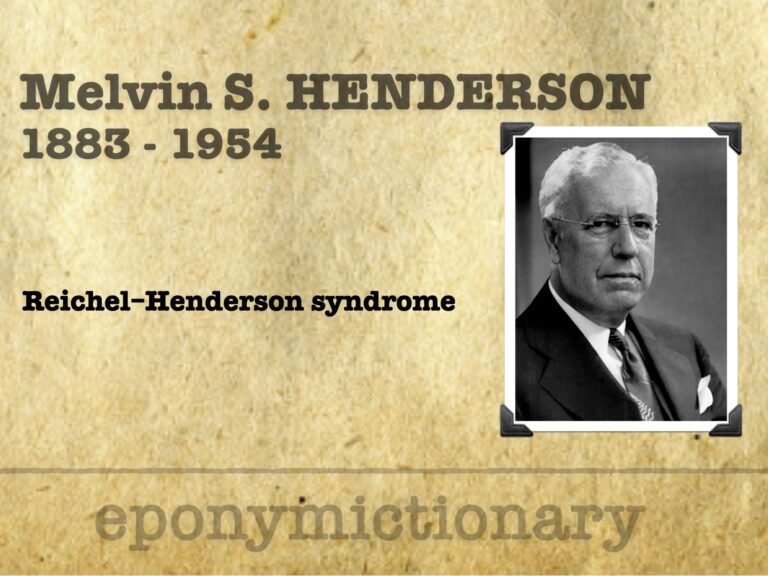
Melvin S. Henderson
Melvin Starkey Henderson (1883–1954), founding Mayo orthopaedist and ABOS president, co-described Reichel–Jones–Henderson syndrome (synovial chondromatosis).

Melvin Starkey Henderson (1883–1954), founding Mayo orthopaedist and ABOS president, co-described Reichel–Jones–Henderson syndrome (synovial chondromatosis).
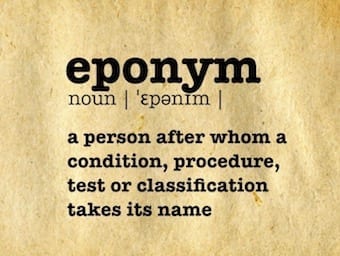
Friedrich Paul Reichel (1858–1934), German surgeon, synovial osteochondromatosis and co-developed the Reichel-Polya gastric operation.

Théophile Alajouanine (1890–1980), French neurologist and humanist; described Foix–Alajouanine syndrome, studied aphasia, epilepsy, and neurological creativity.
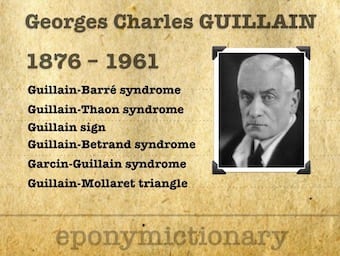
Georges Charles Guillain (1876-1961) was a French neurologist. Multiple neurology-related eponyms including Guillain-Barré syndrome

Woldemar Mobitz (1889-1951) was a Russian-German physician. Applied mathematical approach to arrhythmias 1924 Mobitz Type I and II AV Block
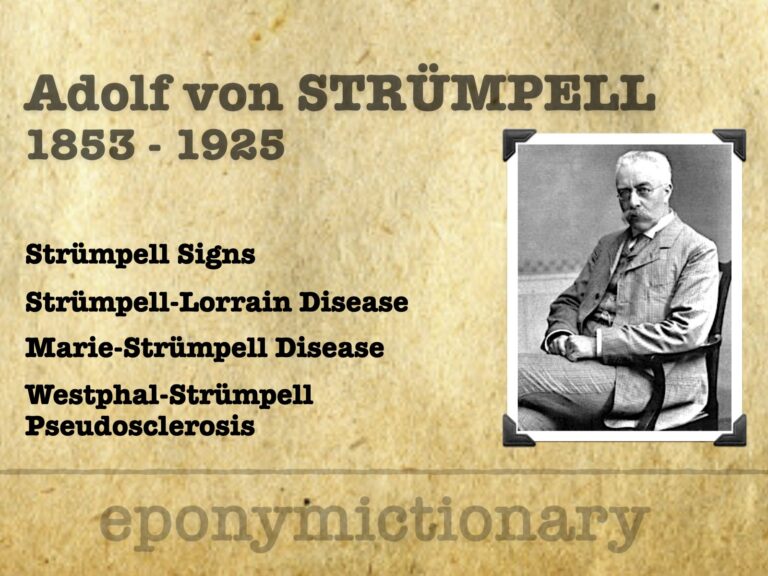
Ernst Adolf Gustav Gottfried von Strümpell (1853-1925) was a German neurologist. Strümpell signs, Strümpell-Lorrain disease, Marie-Strümpell disease and Westphal-Strümpell pseudosclerosis.
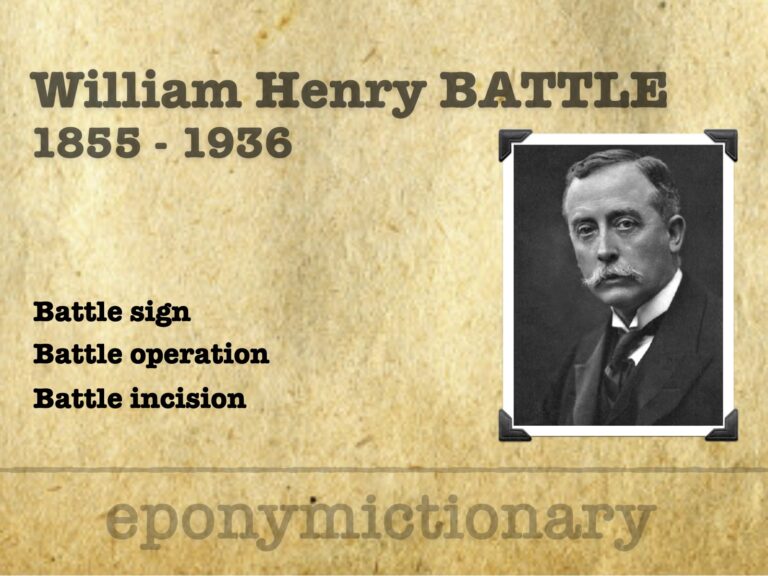
William Henry Battle (1855–1936) English surgeon. Battle incision, Battle operation and Battle sign postauricular (mastoid) ecchymosis
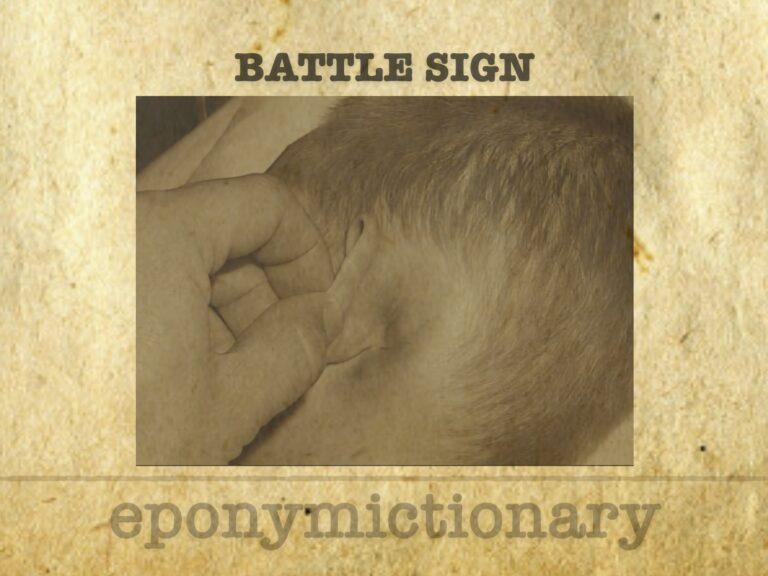
Battle sign: mastoid ecchymosis indicating basilar skull fracture, described by W.H. Battle in 1890; it holds >75% PPV for posterior fossa injury.

Carl Gerhardt (1833–1902), German internist and paediatric pioneer, described Gerhardt’s sign and advanced diagnostics, paediatrics, and laryngology

Eugen Julius Karl Paul Alfred Stieda (1869 – 1945) was a German Surgeon. Eponym: The Stieda fracture, Stieda tubercle and Pellegrini-Stieda disease (1908)

Libman–Sacks endocarditis is a sterile cardiac valve lesion linked to lupus and antiphospholipid syndrome, often detected via echocardiography

Benjamin Sacks (1896–1971), cardiac pathologist and co-describer of Libman–Sacks endocarditis, also a Hollywood advisor and Arizona frontier historian.